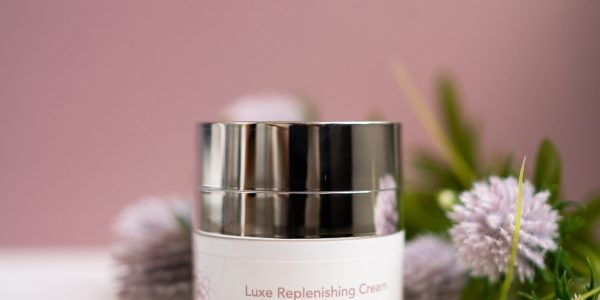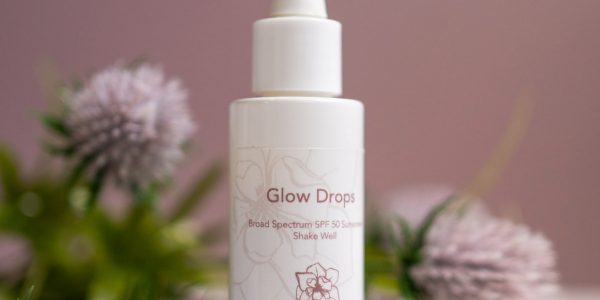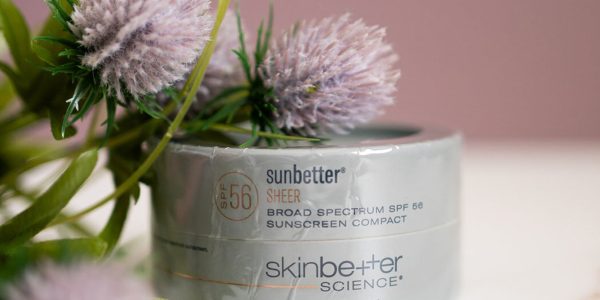Smooth Wrinkles and Restore Volume Hyaluronic Acid Fillers
Among the various options available for facial rejuvenation, hyaluronic acid fillers have gained immense popularity. Hyaluronic acid is a naturally occurring substance found in the body, particularly in the skin, joints, and eyes.
In the context of facial rejuvenation, hyaluronic acid fillers are injectable substances that help restore volume, smoothen wrinkles, and enhance facial contours. Learn all about Hyaluronic Acid Fillers and find out if it’s the right skincare treatment for you!
Benefits of Hyaluronic Acid Fillers
Hyaluronic acid fillers offer several advantages that make them a preferred choice for individuals seeking facial rejuvenation. Here are some notable benefits:
Natural Results: Hyaluronic acid fillers provide natural-looking results, enhancing facial features while maintaining an authentic appearance. The fillers integrate seamlessly with the surrounding tissues, resulting in a youthful and refreshed look.
Non-surgical Procedure: Unlike surgical interventions, hyaluronic acid fillers are non-surgical procedures that involve minimal downtime and discomfort. Individuals can undergo the treatment during a short office visit and resume their regular activities shortly afterward.
Versatility: Hyaluronic acid fillers are versatile and can be used for various purposes, including filling wrinkles and fine lines, augmenting lips and cheeks, and correcting nasolabial folds and marionette lines. This versatility allows for a personalized treatment plan tailored to individual needs.
Long-lasting Effects: While the duration of the results may vary depending on several factors, hyaluronic acid fillers typically offer long-lasting effects. The results can be enjoyed for several months, with some formulations even providing results that can last up to a year or more.
Reversible Treatment: One significant advantage of hyaluronic acid fillers is that the treatment is reversible. In case an individual is dissatisfied with the results or experiences any complications, the filler can be dissolved using a specific enzyme, returning the face to its pre-treatment appearance.
What is Hyaluronic Acid?
Hyaluronic acid, also known as hyaluronan, is a naturally occurring substance found in the human body. It is a type of glycosaminoglycan, which is a molecule composed of repeating sugar units. Hyaluronic acid has a unique ability to attract and retain water molecules, making it an essential component for maintaining hydration and lubrication in various tissues.
The primary function of hyaluronic acid is to provide structural support and cushioning to the body’s tissues, particularly in the joints and the skin. It acts as a lubricant, allowing smooth movement between bones and reducing friction. In the skin, hyaluronic acid plays a crucial role in maintaining moisture levels, contributing to its plumpness, elasticity, and overall youthful appearance.
Natural Occurrence in the Body
Hyaluronic acid is naturally produced by the body, with the highest concentrations found in the skin, eyes, and connective tissues. However, its production tends to decrease with age, leading to a decline in the skin’s moisture retention capabilities and the appearance of aging signs such as wrinkles, fine lines, and sagging.
Role in Skin Health and Elasticity
In the skin, hyaluronic acid plays a vital role in maintaining its health, hydration, and elasticity. It is a key component of the extracellular matrix, which provides structural support to the skin. Hyaluronic acid molecules hold a significant amount of water, contributing to the skin’s moisture content and helping to maintain its supple and smooth texture.
As we age, the natural production of hyaluronic acid declines, resulting in reduced moisture retention, loss of firmness, and the formation of wrinkles and fine lines. Environmental factors, lifestyle choices, and genetics can also impact the levels of hyaluronic acid in the skin.
Given its importance in skin health, hyaluronic acid has become a popular ingredient in skincare products, including moisturizers, serums, and masks. These products aim to replenish the skin’s hyaluronic acid levels, improving hydration, elasticity, and overall skin appearance.
Hyaluronic acid fillers used in facial rejuvenation treatments work by injecting a synthetic form of hyaluronic acid into specific areas of the face. This helps restore volume, reduce wrinkles, and enhance facial contours. The synthetic hyaluronic acid used in fillers is designed to mimic the body’s natural hyaluronic acid, allowing for safe and effective results.
How Hyaluronic Acid Fillers Work
Hyaluronic acid fillers work by utilizing the unique properties of hyaluronic acid to rejuvenate the skin and enhance facial features. The filler gel, which contains a synthetic form of hyaluronic acid, is carefully injected into specific areas of the face using fine needles or cannulas.
Once injected, the hyaluronic acid filler integrates with the surrounding tissues and begins to attract and bind water molecules. This process helps restore volume, hydration, and elasticity to the treated areas, resulting in a more youthful and refreshed appearance.
Restoring Volume and Smoothness
One of the primary goals of hyaluronic acid fillers is to restore lost volume in areas where it has diminished due to the aging process. As we age, our skin loses collagen and fat, leading to hollowed areas, flattened cheeks, and deep lines and wrinkles.
Hyaluronic acid fillers are effective in replenishing volume and filling in these areas of volume loss. The gel-like consistency of the filler adds fullness and plumps up the skin, reducing the appearance of wrinkles, lines, and hollowed regions. This restoration of volume can result in a smoother and more youthful facial contour.
Enhancing Facial Contours
In addition to restoring volume, hyaluronic acid fillers can also be used to enhance facial contours. Skilled practitioners can strategically inject the filler in areas such as the cheeks, chin, and jawline to create more defined and sculpted facial features.
For example, by injecting hyaluronic acid filler into the cheeks, it is possible to restore or create a more prominent cheekbone structure, resulting in a youthful and lifted appearance. Similarly, adding filler to the chin can improve its projection and balance facial proportions.
By enhancing specific facial contours, hyaluronic acid fillers can help create a more harmonious and aesthetically pleasing facial appearance.
It’s important to note that the results achieved with hyaluronic acid fillers are typically immediate, allowing individuals to see the improvements in volume and contour right after the treatment. However, some swelling and mild bruising may occur initially, but these temporary side effects typically subside within a few days.
Benefits of Hyaluronic Acid Fillers
1. Natural Results
One of the significant benefits of hyaluronic acid fillers is the ability to achieve natural-looking results. The filler gel, which contains a synthetic form of hyaluronic acid, integrates seamlessly with the surrounding tissues. This integration allows the filler to blend in and enhance the natural contours of the face, without looking overly artificial or “plastic.”
The skilled administration of hyaluronic acid fillers by a qualified practitioner ensures that the results appear subtle and balanced. The goal is to rejuvenate the face while maintaining its unique characteristics and preserving the individual’s natural beauty.
2. Non-surgical Procedure
Hyaluronic acid fillers provide a non-surgical alternative for individuals seeking facial rejuvenation. Unlike surgical procedures, which require incisions and a more extended recovery period, fillers are minimally invasive. The treatment involves the injection of the filler gel into specific areas of concern, such as wrinkles, lines, or volume-deficient regions.
Due to the non-surgical nature of hyaluronic acid fillers, the procedure typically requires minimal downtime. Most individuals can resume their daily activities immediately after the treatment, making it a convenient option for those with busy lifestyles.
3. Quick and Convenient
Another advantage of hyaluronic acid fillers is the speed and convenience of the procedure. The treatment can often be completed within a short office visit, typically lasting around 30 minutes to an hour, depending on the areas being treated.
The injections themselves are relatively quick, and the results are visible immediately. This means that individuals can enjoy the benefits of the treatment right away, without having to wait for weeks or months to see the full results.
4. Long-lasting Effects
While the duration of the results may vary depending on several factors, hyaluronic acid fillers typically offer long-lasting effects. The longevity of the results depends on factors such as the specific filler used, the area treated, individual metabolism, and lifestyle factors.
In general, hyaluronic acid fillers can provide results that last anywhere from several months to a year or more. However, it’s important to note that the body will gradually break down the filler over time, so periodic touch-up treatments may be necessary to maintain the desired results.
5. Reversible Treatment
One unique advantage of hyaluronic acid fillers is their reversibility. In the event that an individual is dissatisfied with the results or experiences any complications, the filler can be dissolved using an enzyme called hyaluronidase.
Hyaluronidase breaks down the hyaluronic acid filler, allowing for a controlled and precise reversal of the treatment. This provides individuals with peace of mind, knowing that the treatment can be adjusted or reversed if necessary.
Frequently Asked Questions about Hyaluronic Acid Fillers
A. How long do the results last?
The duration of the results from hyaluronic acid fillers can vary depending on several factors. Factors such as the specific filler used, the area treated, individual metabolism, and lifestyle choices can influence the longevity of the results.
In general, hyaluronic acid fillers can provide results that last anywhere from several months to a year or more. However, it’s important to note that individual experiences may vary, and periodic touch-up treatments may be necessary to maintain the desired results over time.
B. Does the procedure hurt?
During the hyaluronic acid filler procedure, individuals may experience some discomfort or a slight pinching sensation at the injection sites. However, most fillers contain lidocaine, a local anesthetic, which helps minimize any potential pain or discomfort. Additionally, a topical numbing cream can be applied to the treatment area before the procedure to further enhance comfort.
C. Are there any potential complications?
While hyaluronic acid fillers are generally considered safe, there can be potential risks and complications associated with the treatment. Common side effects may include temporary redness, swelling, bruising, or tenderness at the injection sites. These effects are usually mild and resolve within a few days.
However, more serious complications such as infection, allergic reactions, or vascular complications are rare but possible. It’s crucial to have the treatment performed by a qualified and experienced medical professional to minimize the risk of complications.
D. Can hyaluronic acid fillers be combined with other treatments?
Hyaluronic acid fillers can be combined with other cosmetic treatments to achieve comprehensive facial rejuvenation. For example, they can be used in conjunction with neuromodulators (such as Botox) to address dynamic wrinkles or with laser treatments to improve skin texture and tone.
Combining treatments can offer synergistic effects and provide more comprehensive results. However, the specific combination of treatments will depend on individual needs and goals. It’s important to consult with a qualified practitioner to determine the most suitable treatment plan for your unique circumstances.
E. How much does the treatment cost?
The cost of hyaluronic acid filler treatments can vary depending on factors such as the geographic location, the type and amount of filler used, and the expertise of the practitioner. The cost is typically calculated per syringe of filler used.
It’s essential to keep in mind that pricing may vary, and it’s recommended to consult with a qualified practitioner for an accurate cost estimate based on your specific treatment goals




